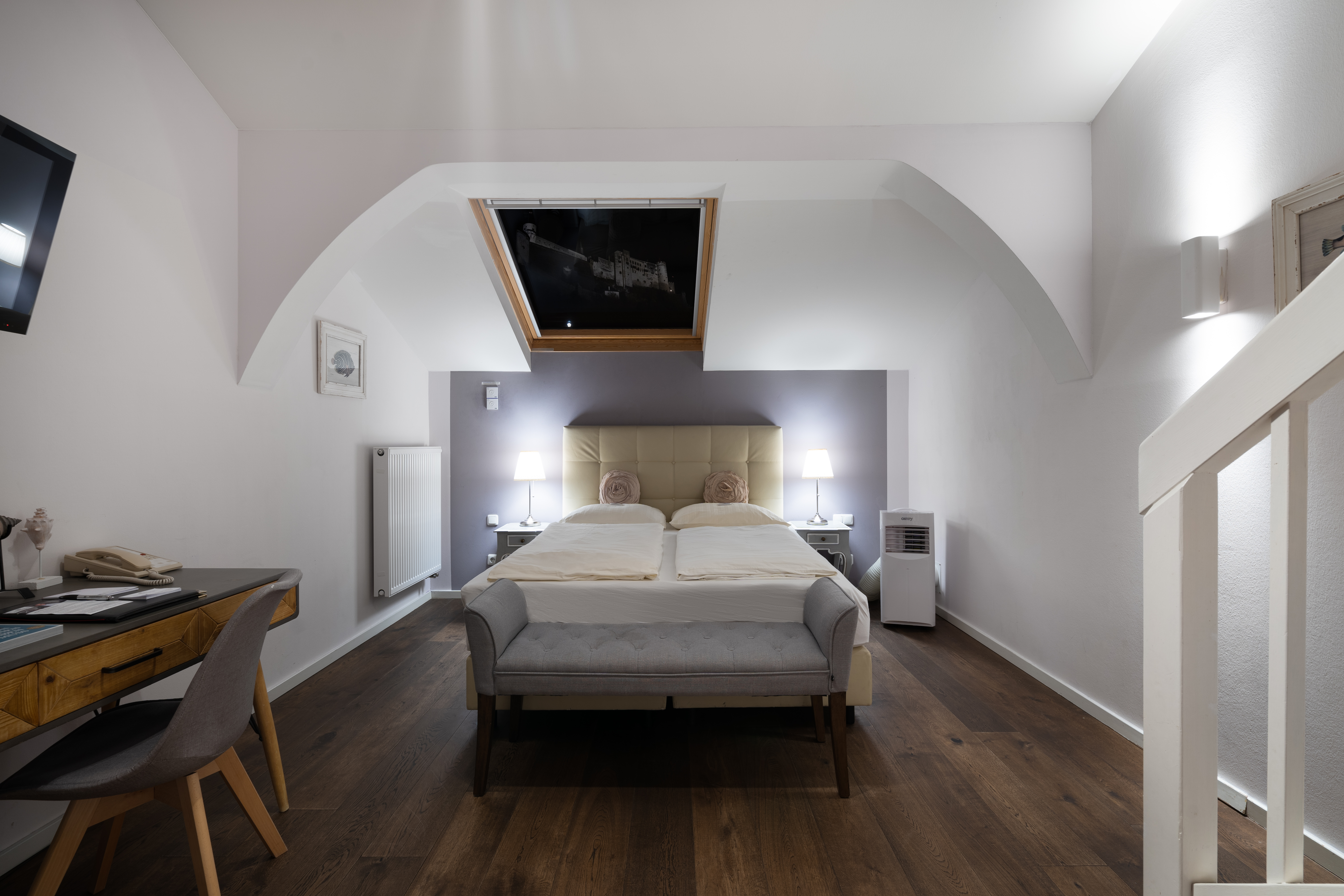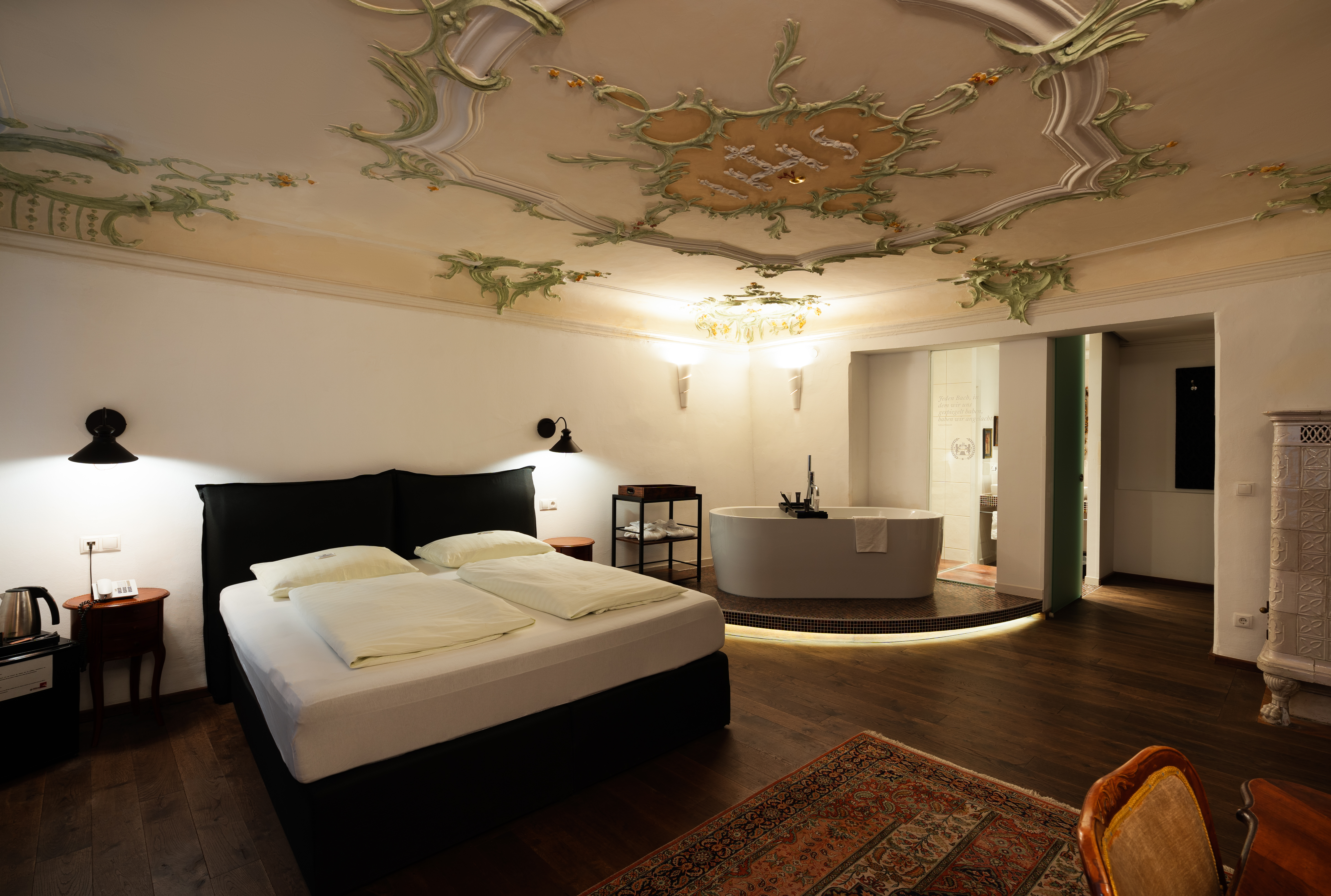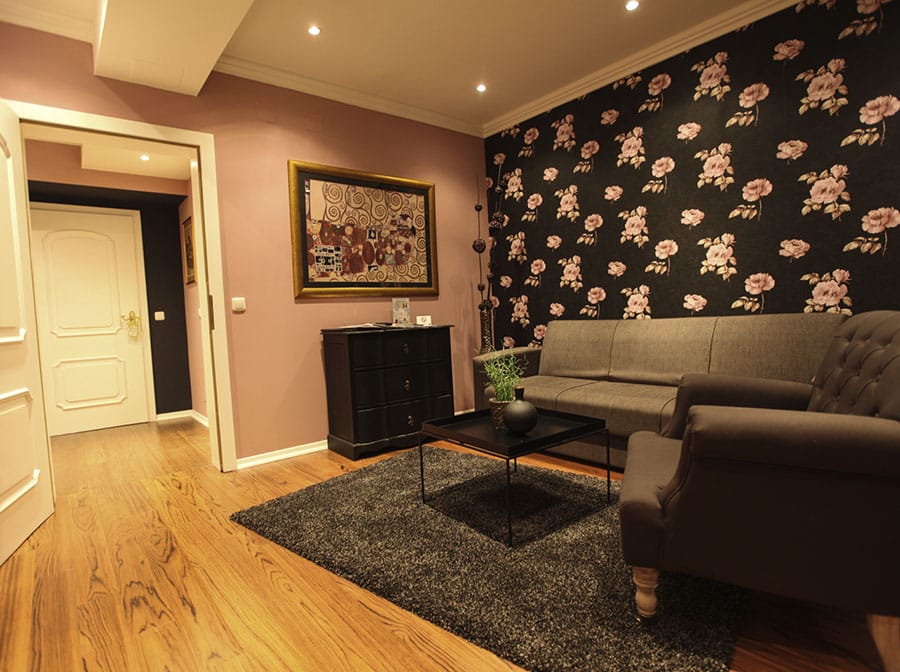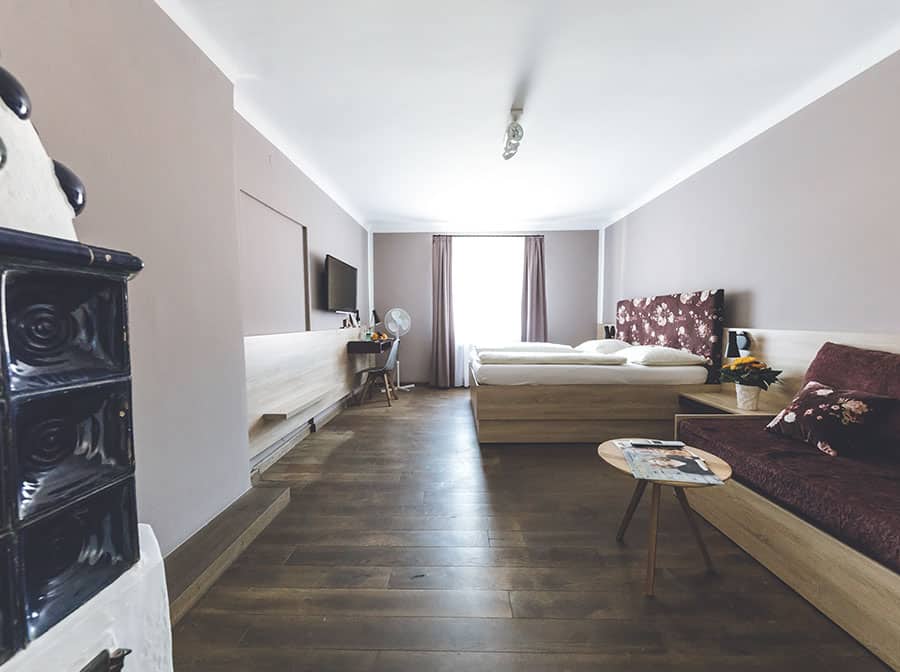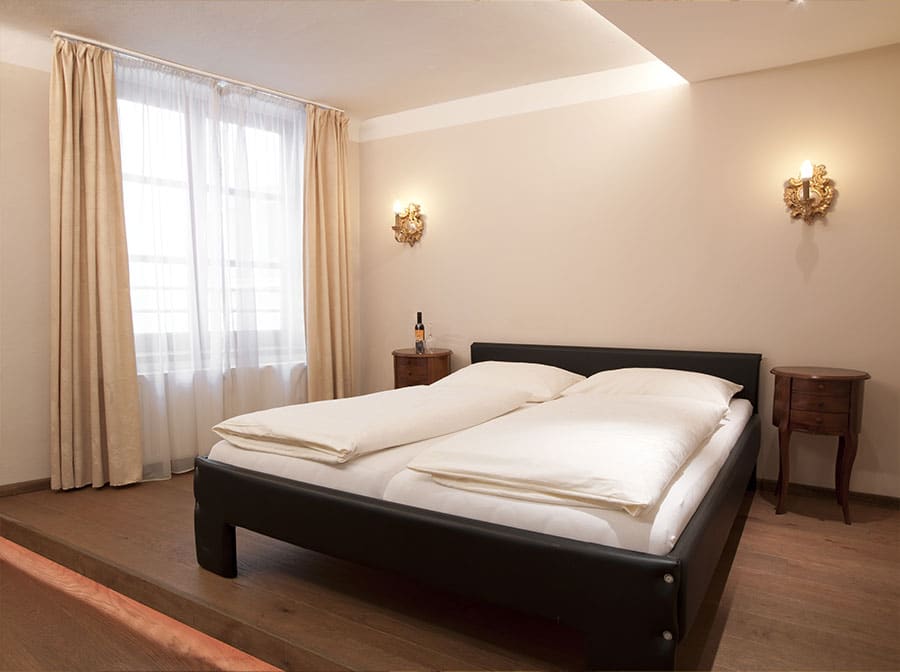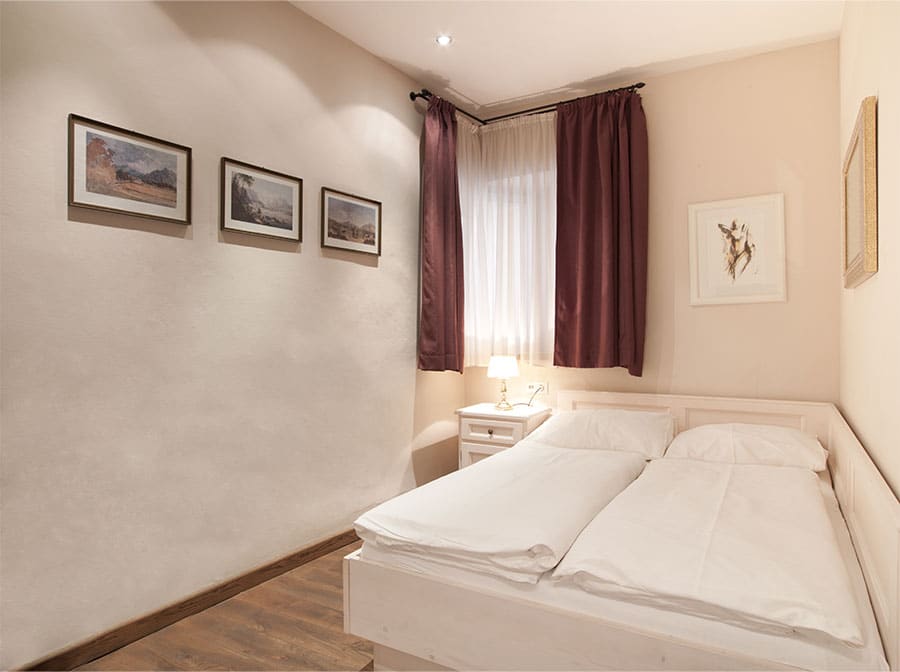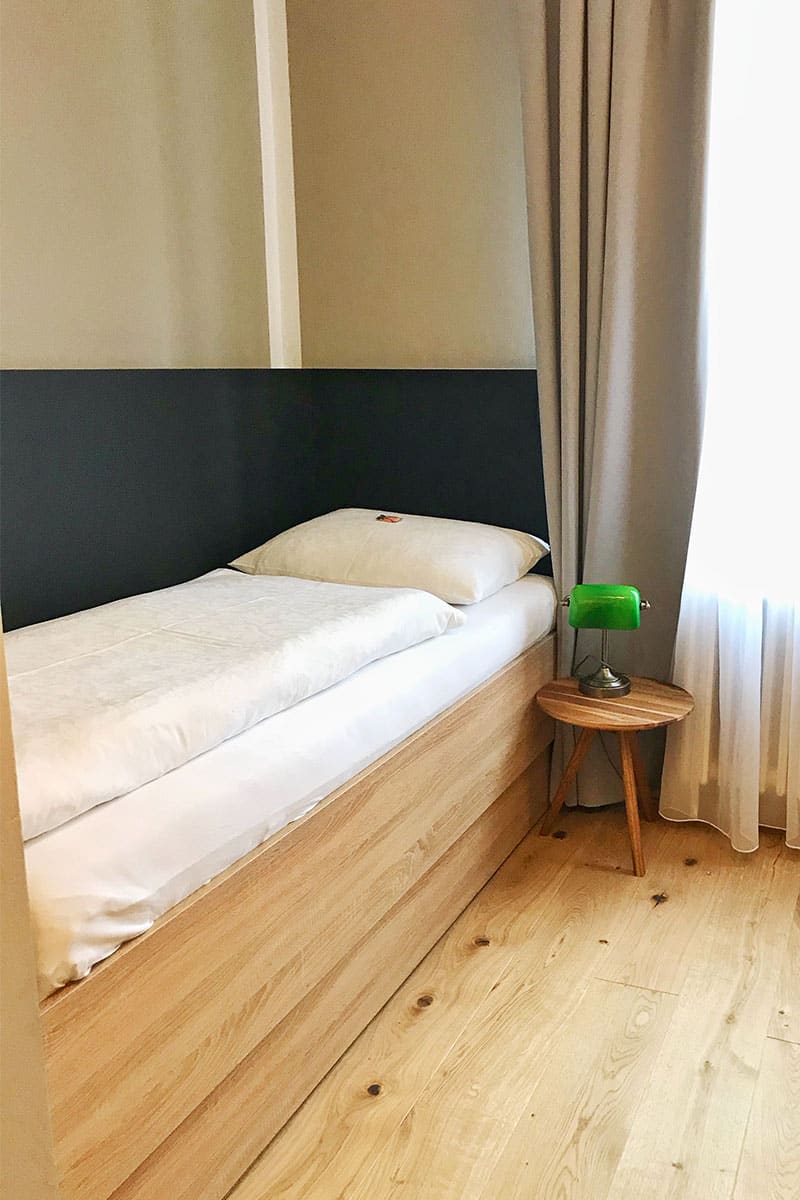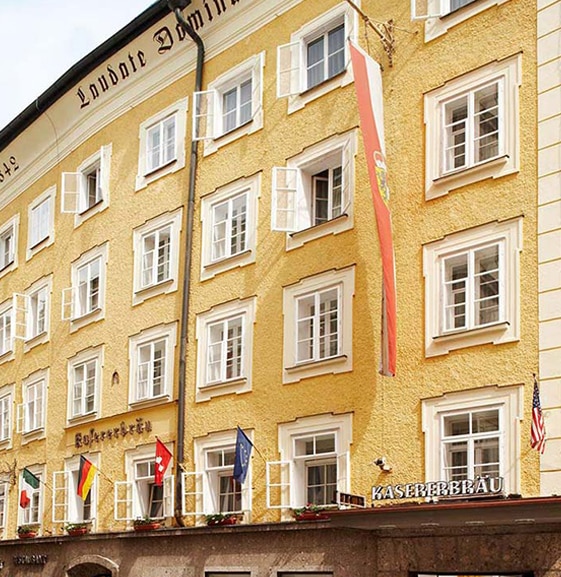
4 star hotel in the middle of the old town of Salzburg
The old town hotel "Kasererbräu" - Sights within reach
Choose from 45 stylish, individual hotel rooms and suites and enjoy the luxury of staying in the center of the cultural metropolis of Salzburg.
The traditional and family-run hotel in Salzburg is part of the architectural-art historical treasure of Salzburg’s old town. The best of the stylistic eras of the last 600 years is reflected in the hotel’s premises and guarantees an unforgettable vacation in Salzburg.
The only hotel in Salzburg’s old town with its own hotel parking lot, free Wi-Fi, sauna and in-house cinema, the world-famous Mozart Cinema. A piece of film history was written in the Mozart cinema.
The most important at a glance
The most important information for our guests at a glance
Hospitality since 1342
The family-run 4-star hotel in Salzburg since 1342 is located in a prime location in the middle of the pedestrian zone of Salzburg’s old town.
Hotel cinema
Cinema films have been flickering on the screens of the Mozart Cinema since 1905. This makes it one of the first and oldest movie theaters in the world.
Parking + electric charging station
As the only old town hotel in Salzburg, we offer our guests a hotel parking lot, partly equipped with garages, directly at the hotel.
Brewery from 1526
The history of Salzburg’s old town hotel “Kasererbräu” goes far back into the past. About 650 years after the first mention of the house, its own beer is brewed again and served to guests!
Directly under the fortress
Between the Hohensalzburg Fortress and the Salzach River, a few meters from Salzburg Cathedral, you will find the Salzburg Altstadthotel Kasererbraeu. Only two street corners separate the 4 star hotel from the Salzburg Cathedral.
Best price guarantee
You book through our website and benefit from our lowest rate at that time including free admission to the Mozart Cinema.
Hotel Director Alexander Krammer
I cordially welcome you to the Altstadthotel Kasererbräu!
The Kaiviertel is Salzburg’s secret artists’ district: lively, culturally enthusiastic and charming. With its numerous galleries, chic boutiques and cozy eateries with themed cuisine around the world, the Kaiviertel is one of my favorite places in the city.



Salzburg Cathedral is the cathedral of the Roman Catholic Archdiocese of Salzburg and is one of the most imposing buildings in Salzburg's old town. With a height of 81 meters, the building is also one of the tallest in Salzburg. In October 1944 the dome of the cathedral was destroyed in an air raid and reconstructed until 1959. The building itself was completed for the first time in 774.
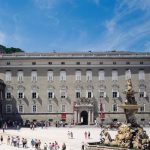
Two residences for Salzburg's archbishops
The "old Salzburg residence" is a prince-archbishop's palace complex. On the opposite side of the Residenzplatz is the Neue Residenz. The building was completed in the 12th century and has since been considered one of the most imposing buildings in Salzburg with its 180 rooms and halls. Magnificent festivities still take place here today, such as the opening of the festivities for "200 years of Salzburg's annexation to Austria" in 2016 with the visit of the Federal President.

Acquired in 1591 by Archbishop Wolf Dietrich
Next to the Church of the Holy Trinity is the Holy Staircase, an imitation of the Roman Scala Santa, which may only be climbed kneeling. During Lent, the Scala Santa is freely accessible. The Church of St. Cajetan in the Kaiviertel is dedicated to St. Maximilian and St. Cajetan and was built as a monastery church in the 17th century.

The oldest Christian convent for women in the world today
Here are frescoes from the year 1009, which are among the most important Romanesque wall paintings in Austria. However, the monastery became famous above all through the film "The Sound Of Music", which attracts millions of tourists to the city of Mozart every year. The monastery can be visited daily from 7:00 am. Visits are not possible only during church services.

The monastery itself was founded in 700 AD
The Archabbey has one of the oldest and most beautiful cemeteries in the world. The monastery itself was founded in 700 AD by the Frankish missionary Rupert. As the oldest monastery in the German-speaking world, the Archabbey looks back on unbroken continuity in the heart of Salzburg's old town. A vital center, which allows to switch off and dream, where walks become faith journeys.

Kapitelplatz is a large square south of the Salzburg Cathedral
If you take the way to the High Fortress, to the Fortress Railway or to the St. Peter's Cemetery, you will cross the Chapter Square. The spacious square is bordered by the cathedral to the south, the cathedral provost's office and the archbishop's palace to the east, the novitiate wing of St. Peter's Abbey to the west and the mill of the cathedral chapter.

The center of the square is the Mozart monument
The centerpiece is the Mozart Monument, which was made by Ludwig Schwanthaler. In winter, an ice skating rink is designed here - at Mozartplatz. In addition, the Salzburg Christmas Market is also located here, which is one of the most famous Christmas markets in Europe and takes place from the end of November to the end of December at the Dom-Mozart and Residenzplatz.

Salzburg's most popular open-air shopping mall
Welcome to the Getreidegasse, probably the most famous and most-traveled shopping street in Salzburg and, among other things, the Mozart birthplace.
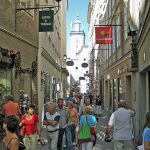
Boutiques and international brand stores now line up here. Next to Getreidegasse, this street is one of the most popular strolling areas in Salzburg.
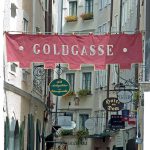
This was once the location of the Salzburg goldsmiths
Today, this street is one of the great international fashion streets. Fashion lovers and trendsetters meet here to be inspired by the latest trends in the fashion world.
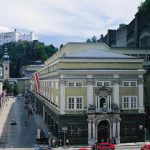
Imposing venue of the Salzburg Festival
The Salzburg Festspielhaus is an imposing venue that is perceived as a well-attended and impressive event house, especially in times of the Salzburg Festival. Great operas, musicals, concerts, orchestras and much more play here!

If you prefer to reach the fortress on foot, you can walk about 20 to 30 minutes to the fortress - which provides an incredibly-beautiful view of the old town.

The church was founded in 1623 by the Benedictine University of Salzburg
The collegiate church serves as the university church and is a protected monument.
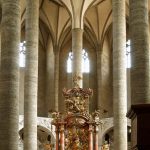
The Gothic church of the citizens
The Franciscan Church is the oldest church in Salzburg and belongs to the Gothic period. For interested guests it can be visited daily from 06:30 to 19:30.
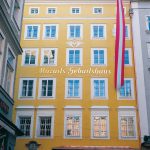
On January 27, 1756, Salzburg's boy wonder was born
Yes, it's true! Mozart's family lived here from 1747 to 1773 on the third floor of Getreidegasse number 9. If you are interested, you are welcome to visit the Mozart Museum inside, which is open daily for you.

A gift of love that Prince Archbishop Wolf Dietrich von Raitenau
One of the most popular places for weddings in Salzburg is Mirabell Palace. But there is a reason for that: the castle with its castle garden is guaranteed to be one of the most beautiful places in the world. Let yourself be enchanted by the Mirabell Garden and centrally take a unique look at the Hohensalzburg Fortress.

A prominent place for modern art
The museum above the rooftops of Salzburg's old town can be reached in the quickest way by taking the Mönchsberg elevator at number 13 Gstättengasse. If you feel like climbing the Museum der Moderne on foot, you can set off on a 30-minute walk to the museum right outside the doors of the Altstadthotel Kasererbräu.
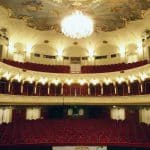
In the middle of the city of Salzburg theater has been played since the 18th century
Theater has been played here since the 18th century. Right next door is the Salzburg Marionette Theater, where plays such as Sound Of Music and The Little Prince are wonderfully crafted as marionette pieces to endear themselves to audiences. The Marionette Theater, along with the Salzburg Landestheater, is one of the must-see places to get to know, understand and love the city and its culture.
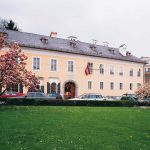
Wolfgang Amadeus Mozart - Salzburg's most famous son
In addition to the Mozart birthplace, the Mozart family home also plays a major role. In September 1773 the Mozart family moved here to their new house. It is located directly at the Markartplatz.
Salzburg as a synthesis of the arts
Salzburg: Festival City, Rome of the North or Mozart City - Salzburg has many faces
Discover the Salzburg you like best during your vacation. In 1997, Salzburg’s Old Town was designated a UNESCO World Heritage Site. Anyone who has ever visited the city on the Salzach River will immediately understand why. Salzburg welcomes its guests with a picturesque backdrop: The centuries-old Hohensalzburg Fortress towers over the city’s church spires and domes, framed by majestic mountain peaks. The baroque old town, which has withstood the test of time, forms a fascinating synthesis of the arts with its churches, squares, buildings, fountains and arcades.



